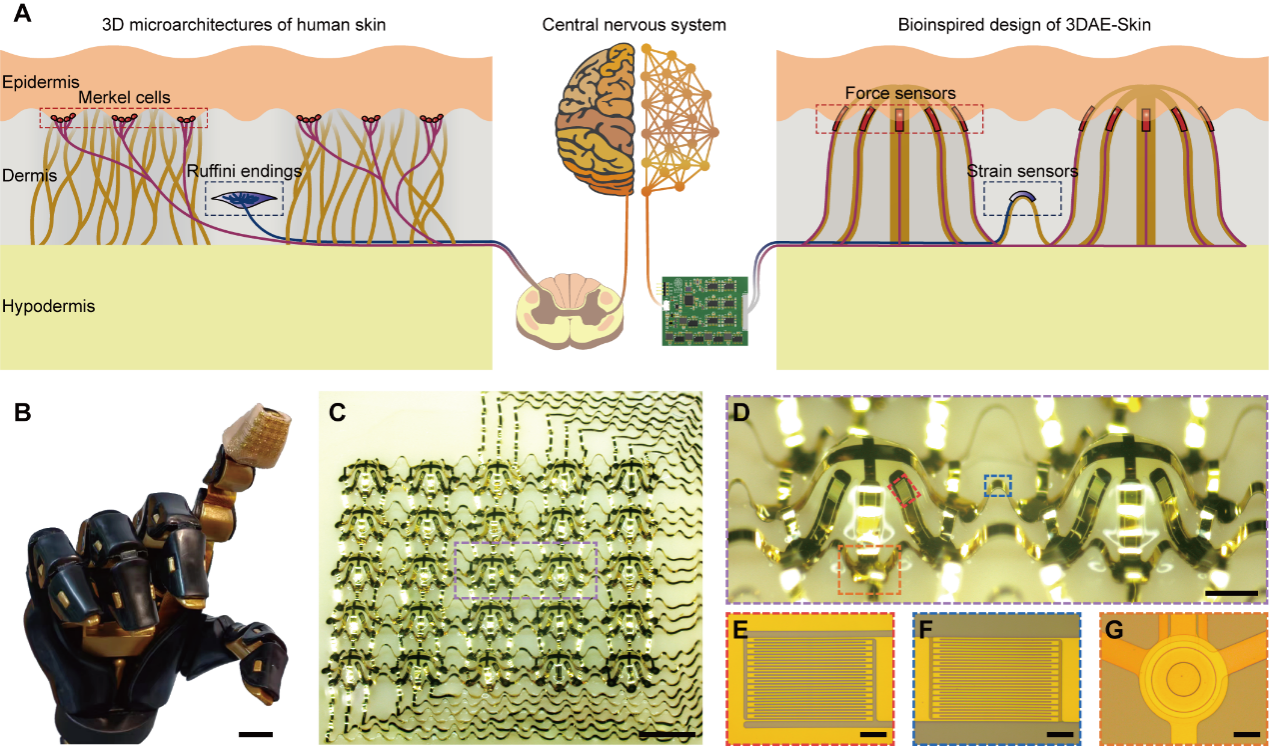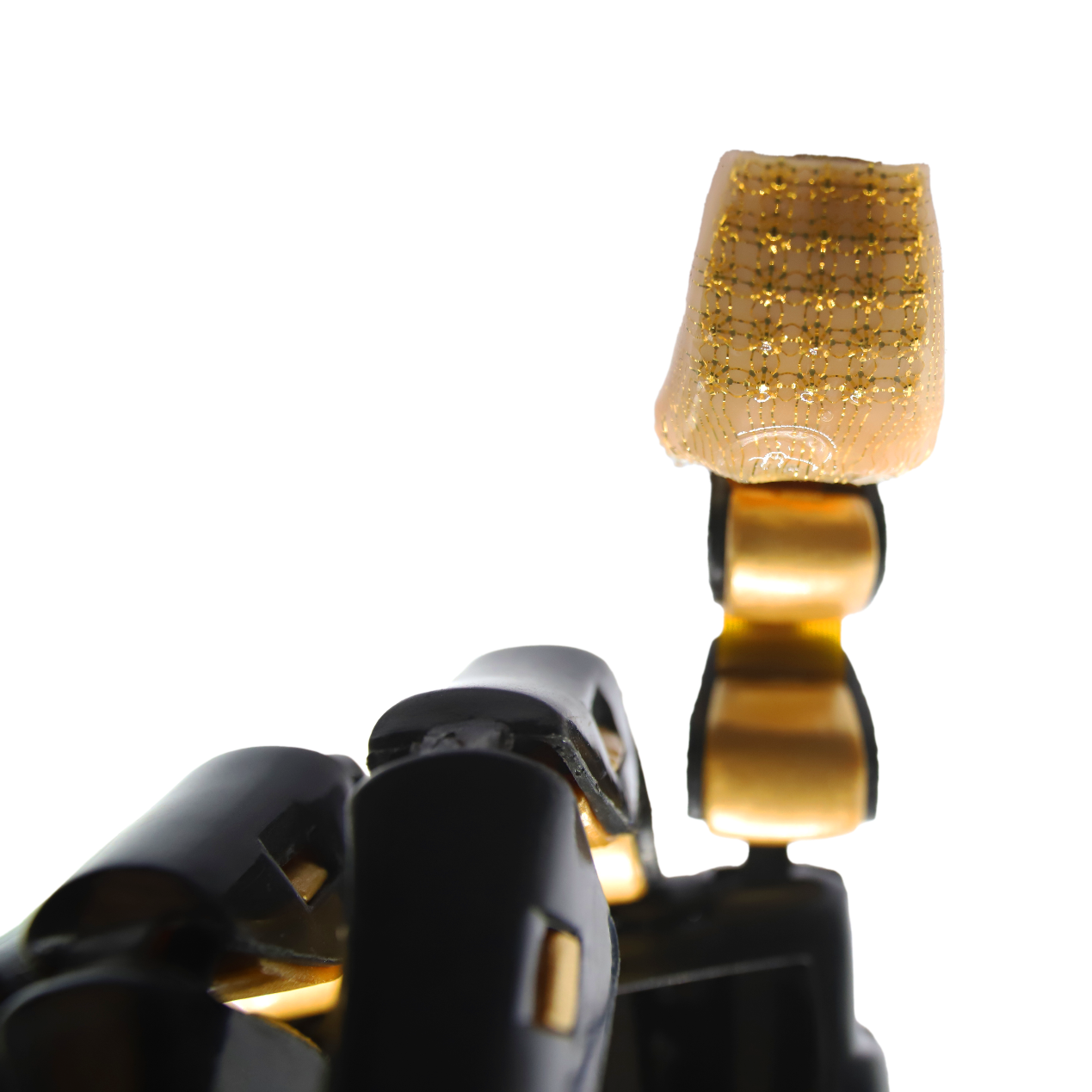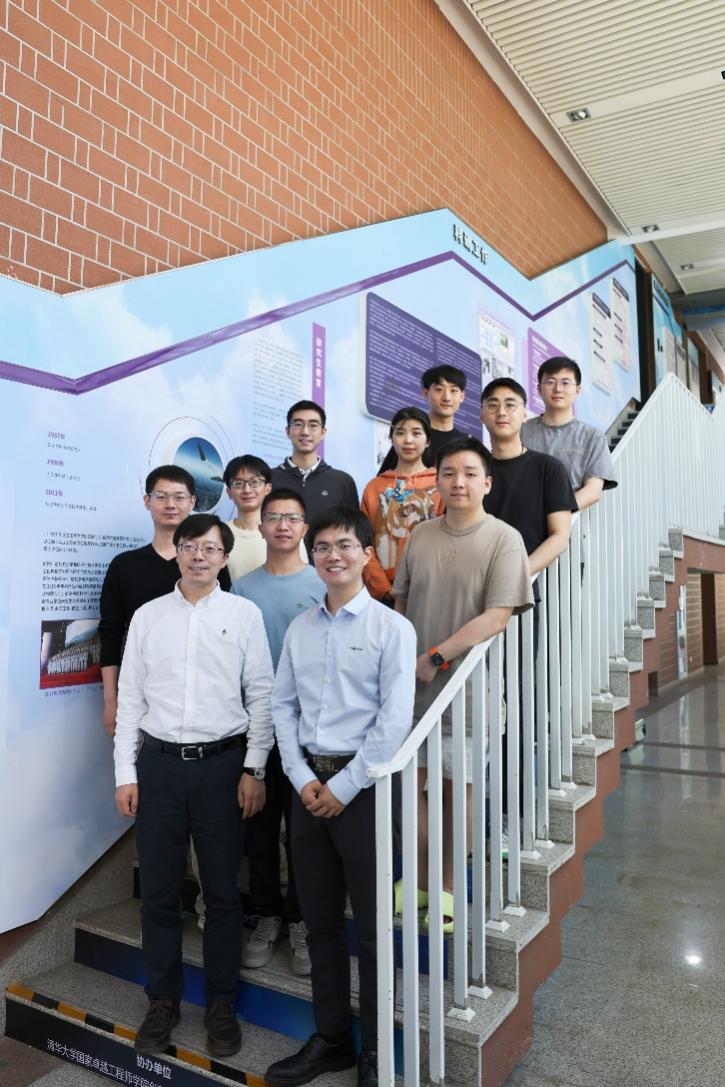An innovative three-dimensional architected electronic skin that mimics human mechanosensation.
Created by nature, the human skin shows powerful sensing capabilities that have been pursued by scientists for a very long time. However, it is challenging for today’s technologies to replicate the spatial arrangement of the complex 3D microstructure of human skin, nevertheless its beauty of sensation.
A research team led by Professor Yihui Zhang from Tsinghua University has developed a three-dimensionally architected electronic skin that mimics human mechanosensation for fully-decoupled sensing of normal force, shear force and strain.

(A) Bio-inspired design of the 3D architected electronic skin (3DAE-skin). (B) 3DAE-skin attached to the finger tip of a robot hand. (C-G) Optical and microscope images of the 3DAE-skin.
Their findings were recently published in the prestigious journal Science.
Taught by nature
Inspired by human skin, they created a three-dimensionally architected electronic skin with force and strain sensing components arranged in a 3D layout that mimics that of Merkel cells and Ruffini endings in human skin. This 3DAE-Skin shows excellent decoupled sensing performances of normal force, shear force, and strain. It is the first-of-its-kind with force and strain sensing components arranged in a 3D layout that mimics that of slowly adapting mechanoreceptors in human skin.

Enchanted by artificial intelligence
With the assistance of artificial intelligence, they developed a tactile system for simultaneous modulus/curvature measurements of an object through touch. Demonstrations include rapid modulus measurements of fruits, bread, and cake with various shapes and degrees of freshness.


The resulting technology provides rapid measurement capabilities of the friction coefficient and the modulus of an object with diverse shapes, with potential applications in freshness assessment, biomedical diagnosis, humanoid robots, prosthetic systems, among others.
Zhang’s study was done with colleagues from Tsinghua University’s Applied Mechanics Laboratory, Department of Engineering Mechanics and Laboratory of Flexible Electronics Technology.

Information of the research article:
Liu et al. A three-dimensionally architected electronic skin mimicking human mechanosensation. Science, 2024, Vol 384: 987-994 (https://www.science.org/doi/10.1126/science.adk5556 )
Editor: Guo Lili